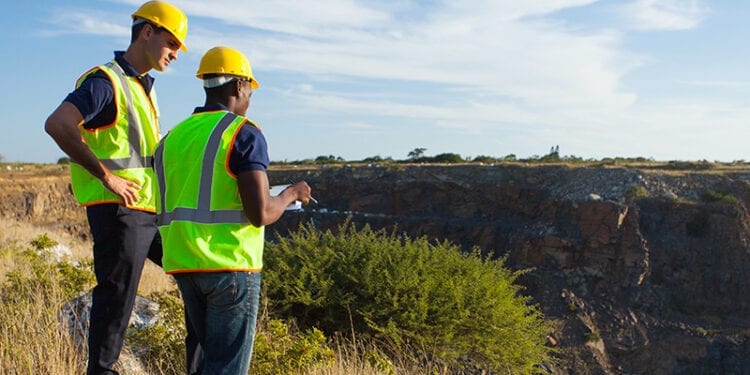Could you start by introducing Ibaera Capital to our audience, reflecting on the market gap that the company has tapped into?
Ibaera Capital is a specialist investment group managing closed-end private equity mining funds, investing in advanced, non-producing mining projects, and helping these projects get through to the construction phase. The public-listed markets typically fund exploration companies, while the very large institutional investors and the mining companies tend to invest in projects that are producing mines – those that are already past the construction phase. We saw a gap in funding for advanced projects which, as they get closer to construction, they find it more difficult to secure the funds to develop to build. While the entire lifespan of a mine from the first drill hole to completion can be 30 years, Ibaera participates for two to four years, becoming involved in a critical point in the life of an asset, when the project transitions from explorer to developer.
Could you give us more details on the types of projects that Ibaera Capital is attracted to?
One criterion is that we only invest in future-facing metals: gold, copper, cobalt, nickel, zinc – those metals that underpin future world economies by their association with green energy sources and decarbonization, or, in the case of gold, which act as a hedge against instability. We are also only interested in geographies where ESG compliance, transparency, and support for local community development are standard practices. Applying these filters, Ibaera Capital only targets about 5% of the world’s mining projects.
Within this delineated space, we look at projects with convincing data attesting that the project can be funded through to construction and that it is economically attractive. Ibaera is intentionally not an operator. We are identifying and developing projects to a stage where they are sufficiently de-risked for major mining companies and other investors to participate.
What are the principal jurisdictions that Ibaera looks at?
We invest in geographies where miners want to mine, in both established and emerging mining jurisdictions. One example is Ghana, which is the largest gold producing country in Africa, with a long history in gold mining, an established rule of law, welcoming communities, and a skilled workforce. In other words, it is easy to operate in the country. Another example is Serbia, an emerging location for world class mining development which is home to our Rogozna project with more than 8 million ounces of gold.
What has drawn Ibaera Capital to Ghana, and what work has been completed at the project so far?
When we first saw our Black Volta project back in 2015, the market was very negative about gold, and investors had lost interest in the project. But the fundamentals of the asset looked very positive and from our point of view, it was a perfect opportunity to help the project advance. We first invested in the project in November 2017, and within three years we have spent US$40 million which has significantly increased its size and economics to now define the project as construction ready. We are currently in the process of finalising funding to start construction in early 2021.
How do you think funding for gold juniors is being changed by the run in the gold price?
In 2020 we have seen a very volatile marketplace, with many industries hit hard by COVID-19, and significant capital flows into gold as well as into other mining commodities. Investment in gold has been very much driven by a change in sentiment: from being an undesirable sector to invest in to becoming a sector that everybody wants to be in. Many junior non-producing companies have increased extraordinarily in price, having gone from one extreme of being highly distressed to being flush with cash. Most gold juniors are now able to raise money and develop their projects, which is good news for exploration, and I suspect we should see a significant increase in exploration spending.
Do you believe more M&A will be encouraged as a result of the gold bull market?
Preeminent industry executives argue that, despite the increase in gold prices, opportunities for M&A remains limited, primarily because of the limited ability to buy strategically attractive projects at economically attractive valuations. Personally, I think there are very few projects that are both economic and fairly valued. M&A is more likely to occur between mature companies in production that have both experienced valuation uplifts and can achieve strategic operational efficiencies by investing in producing mines or additional mining inventory.
What can you share about the 2020 Vintage Fund?
Our last 2017 fund is now closed. It invested US$64.5 million over the last 2.5 years. We opened our 2020 fund with a target of US$250 million, which will cover five to nine investments. Ibaera provides funding in the range of US$10 to US$80 million per project, but projects will usually take between US$30 to US$50. At the moment, we are looking to make the first investment out of the new fund. We only expect to do one to two deals per year. Our continued approach is to commit to a limited number of high conviction deals and invest significant funding and management time into each.
Do you have a final message?
Because the market is so sentimental, we still see many opportunities for a specialist investor like Ibaera to help projects develop through to and into construction. Secondly, from a future-facing perspective, I believe the mining industry has understood that the investment community is increasingly more concerned about ESG and requires companies to be more considerate of their footprint on world we live in. Ibaera reflects the interests of our investors, and we work to ensure that the money we invest will contribute to a greener and more balanced economy, through projects that are net beneficial to both local communities and to the planet.












